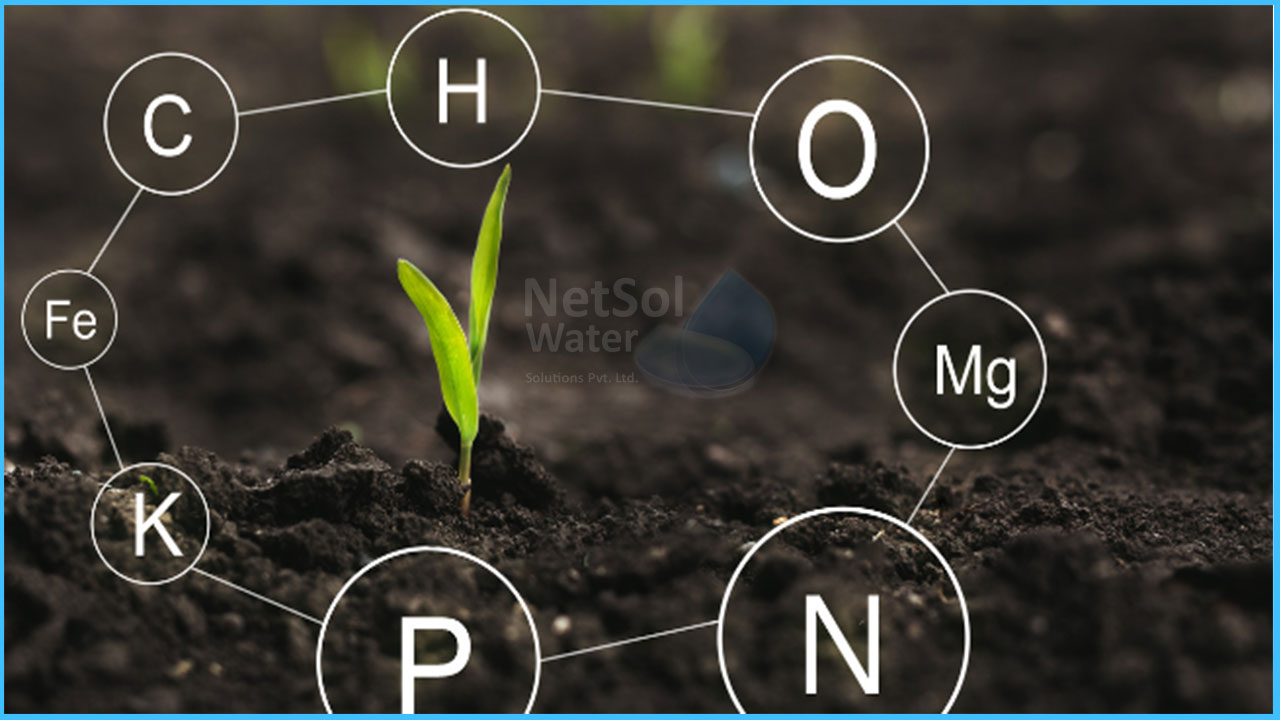What are the essential nutrients for plants?
Soil is an important source of nutrients that plants need to grow. The three major nutrients are nitrogen (N), phosphorus (P) and potassium (K). Together they form a trio called NPK. Other important nutrients are calcium, magnesium, and sulphur. Since plants need some trace elements, they also need small amounts of iron, manganese, zinc, copper, boron, molybdenum, so-called trace elements. The role of these nutrients in plant growth is complex and this document is only a brief overview.
ESSENTIAL NUTRIENTS:
Nitrogen (N)
Nitrogen is an important factor for plant growth. It occurs in all plant cells, plant proteins and hormones, as well as chlorophyll. Atmospheric nitrogen is a source of soil nitrogen. Some plants, such as legumes, fix atmospheric nitrogen to their roots. Otherwise, fertilizer plants use nitrogen in the air to produce ammonium sulphate, ammonium nitrate, and urea. When applied to soil, nitrogen is converted to nitrate in the mineral form, which plants can absorb.
High organic matter soils, such as black soils, generally have a higher nitrogen content than other soils. Nitrate is easily washed away from the soil by heavy rain, leading to acidification of the soil. In organic forms such as composted fertilizers to allow plants to make the most of it or to reduce leachate, they often need to add small amounts of nitrogen.
Phosphorus (P)
Phosphorus helps transfer energy from sunlight to plants, stimulates early root and plant growth, and promotes maturation. All fertilizers contain phosphorus. Manure from grain-eating animals is a particularly abundant source.
Potassium (K)
Potassium can increase plant vitality and disease resistance, help plant starch, sugar and oil formation and transfer, and improve fruit quality. Potassium is deficient in much of the sandy soils. Significant removal of potassium can also occur in soils used for intensive grazing and intensive horticulture (such as bananas and custards). Potassium salts and potassium sulphate are the most common sources of potassium.
Calcium (Ca.)
Calcium is essential for root health, new root and hair growth, and leaf development. It is generally rare in acidic soils. Lime, gypsum, dolomite, and superphosphate (a mixture of calcium phosphate and calcium sulphate) all provide calcium. Lime is the cheapest and best option. Dolomite helps with magnesium and calcium deficiency, but long-term use results in an imbalance between calcium and magnesium. Superphosphate is useful when you need calcium and phosphorus.
Magnesium (Mg.)
Magnesium is an important component of chlorophyll, the green pigment of plants, and is essential for photosynthesis (the conversion of solar energy into food for plants). Deficiency mainly occurs in sandy acidic soils in high rainfall areas, especially when used in intensive horticulture and dairy farming. High levels of potassium in fertilizers can also lead to magnesium deficiency. Banana farmers consume large amounts of potassium, so banana farmers need to be aware of magnesium levels. Magnesium deficiency can be overcome with dolomite (a mixture of magnesium carbonate and calcium), magnetite (magnesium oxide), or Epsom salt (magnesium sulphate).
Sulphur (S)
Sulphur is an amino acid component of plant proteins and is involved in the energy production process of plants. It is responsible for many flavours and odours of plants, such as onion and cabbage scents.
Sulphur deficiency is not a problem in soils with high organic matter content, but it is easily washed away. The main fertilizer sources are superphosphate, gypsum, elemental sulphur, and ammonium sulphate.
Trace elements
Iron (Fe) Iron is a component of many growth-regulating and growth-promoting compounds.
Manganese (Mn.) Manganese aids in photosynthesis. It is freely available in acidic soils and is often toxic in highly acidic soils but can be deficient in sandy soils. Toxicity is removed with lime.
Copper (Cu) Copper is an essential component of plant enzymes and in readily soils but may be deficient in red soils. Excessive use of another trace element, molybdenum, can lead to copper deficiency in animals. Toxicity can be a problem for gardeners who regularly use Bordeaux mixtures or oxycopper chloride sprays to control diseases of garden crops.
Zinc (Zn) Zinc helps produce plant hormones that are involved in stem and leaf elongation. It is readily available in acidic soils but binds easily to iron in red soils. It can be easily cured by adding zinc sulphate or ground zinc minerals. Zinc can be sprayed on the fruit trees.
Boron (B) Boron helps form the cell wall of rapidly growing tissue. Deficiency reduces the absorption of calcium and impairs the ability of plants to use it.
Molybdenum (Mo) Molybdenum is especially needed for legumes as it helps bacteria and soil organisms convert nitrogen in the air to soluble nitrogen compounds in the soil. It is also important in forming proteins from soluble nitrogen compounds.



